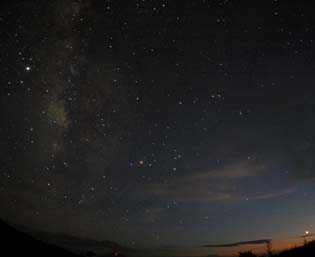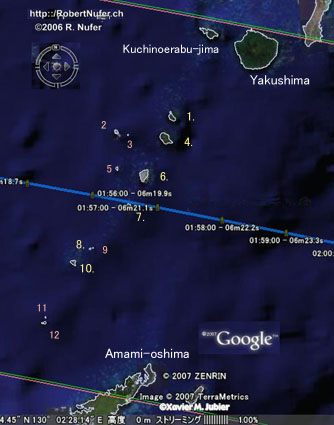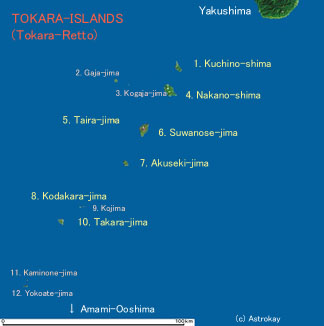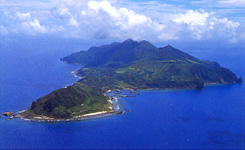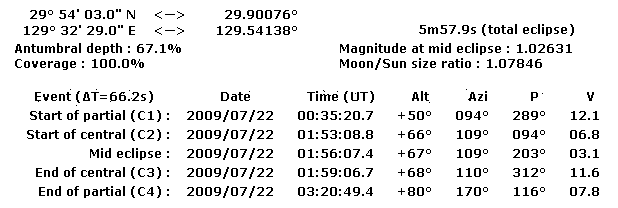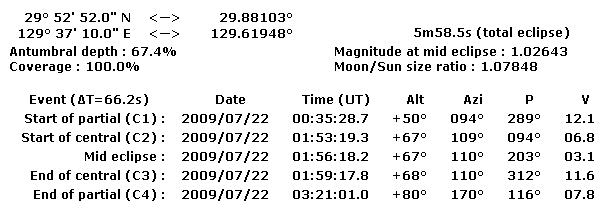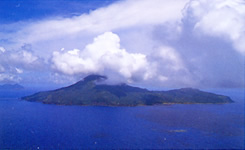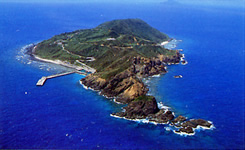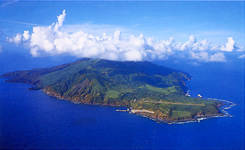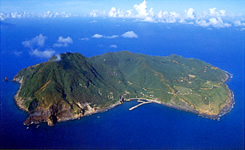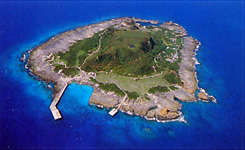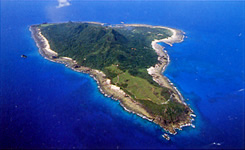The policy and guideline of Toshima Village concerning the total solar
eclipse:
1.Essential principles
(1) Protect residents' life.
(2) Protect natural environment.
(3) Ensure the observers' safety.
(4) The infrastructure and environmental management required for the observers
to stay at the islands such as tents, water, meals and so on are charged
to the observers (beneficiary charge)
2. Transportation to islands
(1) The period from July 17 to 26th, i.e. before and after the eclipse is regarded as special term and the special timetables and diagram of Ferry Toshima is drawn up, maintaining operation as the villagers life route.
(2) 30-person riding small ship (Hamachidori) is chartered to convey observers
from Amami by shuttle service, so that seats of the ferry will be kept
for villagers.
It is also under examination to appeal for cooperation to those who buy the ticket of a ferry after July starts, to avoid the above-mentioned special period by checking the returning schedule. (Possibly tickets will not be sold depending on the schedule)
3. Acceptable number
(1) 1300 persons for sum total of all the islands is the approximate acceptable
number and will be adjusted hereafter.
Kuchinoshima120, Nakanoshima200, Hirajima100, Suwanose-jima310, Akuseki-jima255,
Kodakara-jima75, Takara-jima220
(2) A part of seats of the ferry is secured for residents as mentioned
above.
There is a priority also in a resident frame
1.Residents 2.Relatives 3.Friends
Those cannot necessarily ride on a ferry just because they are residents'
acquaintances.
4. Application for observation
(1) Those who hopes for observing are requested to apply to Kinki Nippon
Tourist Co.Ltd.
The application starts around May.
(2) In order to give them more chances to know and ensure informing our
view of the beneficiary charge, application occasion will be divided into
several times and the observers are to be determined by draw.
5. Restriction of entrance into the islands
(1) It is difficult to accept over 1300 persons since required environmental
management based on the view of a beneficiary charge corresponds to 1300
persons.
(2) During the special period of July 17-26, only residents, staff and
observers are to stay in islands and other people are kindly requested
to avoid staying during the period, which requires measures to be taken.
(3) Restriction by an ordinance etc. is under consideration about the individual
entrance into the islands in a small ship etc.
6. Environmental management for observers to stay
The village will carry out as follows:
(1) Fix tents, temporary toilets, showers, etc.
(There are no tents in Nakanoshima and school gymnasium and Toshima Development
Synthesis Center will be used.)
(2) Construct temporary water supply.
The power supply is under deliberations with electric power company.
(3) Secure the vehicles for transportation in the islands.
(4) Entrust meals to dealers who cook to pouch-packed food collectively
in Kagoshima, which are only warmed on islands.
(5) Support yhe observers and Protect the safety of residents' lives, by
stationing the staff including volunteers from the outside of the islands
,
(6) Make preparations which the village is required to do such as safety
measures ; installation of the covers of gutters, guardrails, and mirrors
on curved roads, etc. |
